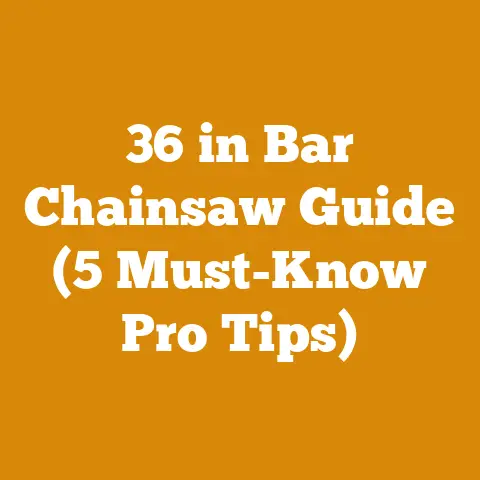Timber Frame Shed Roof Tips (5 Pro Joinery Techniques)
Let’s dive into the world of timber frame sheds and, more specifically, the often-overlooked but crucial element: the roof. I’ve spent years working with timber, from felling trees to crafting intricate joinery, and I’ve learned that a solid roof is the backbone of any durable structure. In this guide, I’ll share my insights and techniques for creating a robust and beautiful timber frame shed roof. We’ll focus on five pro joinery techniques that will elevate your shed from a simple storage space to a testament to craftsmanship.
Timber Frame Shed Roof Tips (5 Pro Joinery Techniques)
Understanding the Importance of Strong Roof Joinery
A timber frame shed roof isn’t just about keeping the rain out; it’s about structural integrity. The roof bears the brunt of wind, snow, and the simple weight of the roofing materials. Weak joinery can lead to sagging, leaks, and eventually, collapse. That’s why choosing the right joinery techniques and executing them flawlessly is paramount. My experience has shown me that taking the time to master these techniques will save you headaches and costly repairs down the line.
Choosing the Right Wood for Your Roof
The type of wood you select will significantly impact the longevity and stability of your timber frame shed roof. Here’s what I’ve learned:
- Species Matters: For strength and rot resistance, consider hardwoods like oak, maple, or hickory. Softwoods like Douglas fir, cedar, and redwood are also excellent choices, especially for their workability and natural resistance to decay. In my own projects, I often use Douglas fir for its excellent strength-to-weight ratio.
- Grading: Look for timbers graded as “Select Structural” or better. This ensures they meet specific strength requirements and are free from major defects like knots or excessive grain deviation.
- Moisture Content: Ideally, your timbers should have a moisture content between 12% and 18%. This minimizes shrinkage and warping after construction. I always use a moisture meter to check before starting any project.
Practical Example: I once built a shed roof using improperly dried pine. Within a year, the roof sagged noticeably due to shrinkage. Since then, I’ve always been meticulous about wood selection and moisture content.
Takeaway: Choose the right wood species, grade, and moisture content to ensure a durable and stable roof.
Technique 1: The Mortise and Tenon Joint (with Variations)
The mortise and tenon joint is the cornerstone of timber framing. It’s a strong, reliable connection that’s been used for centuries. Here’s a breakdown:
- Basic Mortise and Tenon: The tenon (a protruding tongue) is cut on one timber and fits snugly into the mortise (a rectangular hole) on another.
- Wedged Mortise and Tenon: This variation adds extra strength. After inserting the tenon, wedges are driven into slots cut into the tenon, expanding it and locking it in place. I find this particularly useful for rafters where load bearing is critical.
- Drawbored Mortise and Tenon: A hole is drilled through the mortise and tenon after assembly. A wooden peg is then driven through the hole, creating a shear-resistant connection. This is my go-to method for almost all major timber connections.
Tool List:
- Mortise chisel set (1/4″, 1/2″, 3/4″, 1″)
- Tenon saw
- Mallet
- Drill with various sized bits
- Measuring tape
- Square
- Pencils
Step-by-Step Guide (Drawbored Mortise and Tenon):
- Measure and Mark: Accurately measure and mark the dimensions of the mortise and tenon on your timbers. Precision is key.
- Cut the Mortise: Use a mortise chisel and mallet to carefully remove the wood within the mortise outline. Work in small increments to avoid splitting.
- Cut the Tenon: Use a tenon saw to cut the tenon to the correct size and shape.
- Dry Fit: Assemble the joint without glue or pegs to ensure a snug fit. Make adjustments as needed.
- Drill for Pegs: Clamp the joint together and drill a hole slightly offset (1/16″ to 1/8″) through both the mortise and tenon. This offset creates a tighter draw when the peg is driven in.
- Drive the Pegs: Drive wooden pegs (oak or hickory are ideal) into the holes. The offset will pull the joint tighter together.
- Trim the Pegs: Trim the pegs flush with the surface of the timber.
Measurements:
- Tenon length should be approximately 1/3 the thickness of the timber it’s entering.
- Tenon width should be approximately 1/2 the width of the timber it’s entering.
- Peg diameter should be approximately 1/4 the thickness of the tenon.
Common Mistakes to Avoid:
- Loose Fit: A loose mortise and tenon joint is weak. Ensure a snug, tight fit.
- Oversized Mortise: An oversized mortise weakens the timber.
- Improper Peg Placement: Incorrectly placed pegs can split the timber.
Original Insight: I’ve found that slightly rounding the corners of the tenon makes it easier to insert into the mortise, especially with hardwoods.
Takeaway: Master the mortise and tenon joint, experimenting with variations like wedging and drawboring for added strength and stability.
Technique 2: The Dovetail Joint
The dovetail joint is renowned for its exceptional strength in resisting pull-apart forces. This makes it an excellent choice for connecting rafters to ridge beams or wall plates.
- Basic Dovetail: The tenon is shaped like a dovetail, wider at the end, and fits into a corresponding mortise.
- Blind Dovetail: The dovetail is hidden from view on one side, creating a cleaner aesthetic.
- Sliding Dovetail: The dovetail slides into the mortise from the end of the timber.
Tool List:
- Dovetail saw
- Mortise chisel set
- Mallet
- Measuring tape
- Square
- Pencils
Step-by-Step Guide (Basic Dovetail):
- Measure and Mark: Accurately measure and mark the dovetail shape on the tenon and the corresponding mortise on the receiving timber.
- Cut the Dovetail Tenon: Use a dovetail saw to carefully cut the dovetail shape on the tenon.
- Cut the Dovetail Mortise: Use a mortise chisel and mallet to remove the wood within the dovetail mortise outline.
- Dry Fit: Assemble the joint to ensure a snug fit. Adjust as needed.
- Glue (Optional): Apply wood glue to the joint for added strength.
- Clamp: Clamp the joint until the glue dries.
Measurements:
- Dovetail angle typically ranges from 6 to 10 degrees.
- Dovetail width should be approximately 1/2 the width of the timber it’s entering.
Common Mistakes to Avoid:
- Loose Fit: A loose dovetail joint is weak. Ensure a snug, tight fit.
- Incorrect Angle: An incorrect dovetail angle will prevent the joint from fitting properly.
- Over-tightening: Over-tightening clamps can damage the wood.
Original Insight: I’ve found that using a slightly steeper dovetail angle (closer to 10 degrees) provides greater resistance to pull-out forces.
Takeaway: Utilize dovetail joints for connections requiring high tensile strength, such as rafter-to-beam connections.
Technique 3: The Lap Joint
The lap joint is a simple yet effective method for joining two timbers together, particularly when they need to lie flush. This is often used for connecting wall plates or creating continuous beams.
- Half Lap: Each timber is cut halfway through, and the two halves are joined together.
- Full Lap: One timber is notched to receive the full thickness of the other timber.
Tool List:
- Hand saw or circular saw
- Chisel
- Mallet
- Measuring tape
- Square
- Pencils
Step-by-Step Guide (Half Lap):
- Measure and Mark: Accurately measure and mark the area to be removed on each timber. The depth of the cut should be half the thickness of the timber.
- Cut the Lap: Use a hand saw or circular saw to cut along the marked lines.
- Remove Waste: Use a chisel and mallet to remove the waste wood, creating a flat surface.
- Dry Fit: Assemble the joint to ensure a flush fit.
- Glue (Optional): Apply wood glue to the joint for added strength.
- Fasten: Secure the joint with screws or bolts.
Measurements:
- Lap length should be at least twice the thickness of the timber.
Common Mistakes to Avoid:
- Inaccurate Cuts: Inaccurate cuts will result in a poor fit.
- Splintering: Avoid splintering the wood when removing waste.
- Insufficient Fastening: Insufficient fastening will weaken the joint.
Original Insight: I’ve found that slightly bevelling the edges of the lap joint creates a cleaner, more professional look.
Takeaway: Employ lap joints for creating flush connections, especially in wall plates or continuous beams.
Technique 4: The Scarf Joint
The scarf joint is used to join two timbers end-to-end, creating a longer beam. This is essential when you need a beam longer than the available timber length. There are many variations, but the basic principle remains the same: maximizing the surface area of the joint for strength.
- Simple Scarf: Two timbers are angled and overlapped.
- Tabled Scarf: Includes a “table” or flat section for added bearing surface.
- Wedged Scarf: Uses wedges to tighten the joint.
Tool List:
- Hand saw or circular saw
- Chisel
- Mallet
- Measuring tape
- Square
- Pencils
Step-by-Step Guide (Simple Scarf):
- Measure and Mark: Accurately measure and mark the angle and overlap on each timber. A typical angle is 10 to 15 degrees.
- Cut the Scarf: Use a hand saw or circular saw to cut along the marked lines.
- Dry Fit: Assemble the joint to ensure a tight fit.
- Glue (Optional): Apply wood glue to the joint for added strength.
- Fasten: Secure the joint with bolts or screws.
Measurements:
- Overlap length should be at least 6 times the thickness of the timber.
- Angle should be between 10 and 15 degrees.
Common Mistakes to Avoid:
- Short Overlap: A short overlap will weaken the joint.
- Steep Angle: A steep angle will reduce the bearing surface.
- Insufficient Fastening: Insufficient fastening will weaken the joint.
Original Insight: I’ve found that using a tabled scarf joint, even for smaller timbers, significantly increases the joint’s strength and stability.
Takeaway: Use scarf joints to create longer beams from shorter timber lengths, ensuring a strong and continuous structural element.
Technique 5: The Birdsmouth Joint
The birdsmouth joint is specifically designed for connecting rafters to wall plates. It provides a secure and stable connection that resists downward forces.
- Basic Birdsmouth: A notch is cut into the rafter to fit snugly over the wall plate. The notch has two angles, resembling a bird’s mouth.
Tool List:
- Hand saw or circular saw
- Chisel
- Mallet
- Measuring tape
- Speed square
- Pencils
Step-by-Step Guide (Basic Birdsmouth):
- Measure and Mark: Accurately measure and mark the angle and depth of the birdsmouth notch on the rafter. Use a speed square to determine the correct angle based on your roof pitch.
- Cut the Birdsmouth: Use a hand saw or circular saw to cut along the marked lines.
- Remove Waste: Use a chisel and mallet to remove the waste wood, creating the birdsmouth notch.
- Dry Fit: Test the fit of the rafter on the wall plate. It should fit snugly and securely.
- Fasten: Secure the rafter to the wall plate with screws or nails.
Measurements:
- The depth of the notch should not exceed one-third of the rafter’s thickness.
- The angle of the notch should match the roof pitch.
Common Mistakes to Avoid:
- Oversized Notch: An oversized notch weakens the rafter.
- Incorrect Angle: An incorrect angle will prevent the rafter from sitting properly on the wall plate.
- Insufficient Fastening: Insufficient fastening will weaken the joint.
Original Insight: I’ve found that slightly rounding the inside corners of the birdsmouth notch prevents stress concentrations and reduces the risk of splitting.
Takeaway: Employ birdsmouth joints for securely connecting rafters to wall plates, ensuring a stable and well-supported roof structure.
Additional Considerations for Timber Frame Shed Roofs
Beyond joinery, several other factors contribute to a successful timber frame shed roof:
- Roof Pitch: A steeper pitch sheds water and snow more effectively but requires more materials. A shallower pitch is more economical but may require more robust waterproofing. I generally recommend a pitch between 4/12 and 6/12 for sheds.
- Roofing Materials: Consider the weight and durability of your roofing materials. Asphalt shingles are a common and affordable choice, while metal roofing offers superior longevity. Consider environmental factors like heavy snowfall when making your selection.
- Overhangs: Roof overhangs protect the walls from rain and sun, extending the lifespan of your shed. I recommend a minimum overhang of 12 inches.
- Ventilation: Proper ventilation prevents moisture buildup and extends the life of your roof. Install vents in the soffits and ridge.
Safety First
Working with timber and power tools can be dangerous. Always wear appropriate safety gear, including:
- Safety glasses
- Hearing protection
- Gloves
- Steel-toed boots
Be mindful of your surroundings and follow all safety guidelines for your tools and equipment.
Final Thoughts
Building a timber frame shed roof is a rewarding project that combines craftsmanship with practicality. By mastering these five pro joinery techniques and paying attention to detail, you can create a durable and beautiful roof that will stand the test of time. Remember to choose the right wood, prioritize safety, and take pride in your work. Good luck, and happy building!






